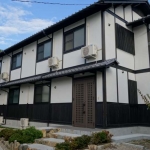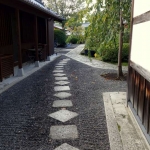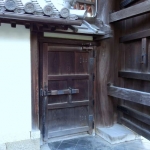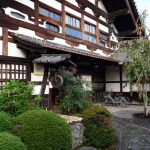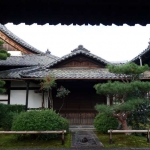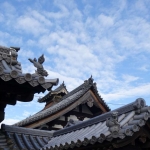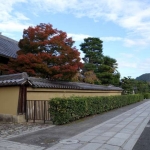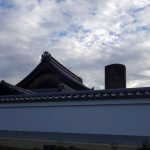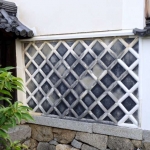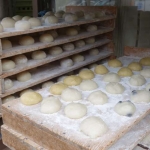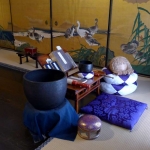Shukobo/Temple Lodging
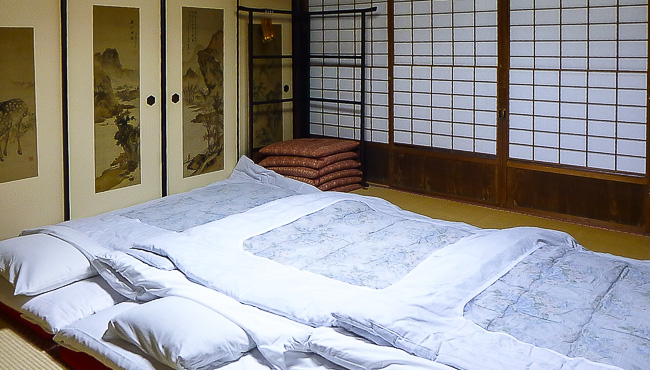
Temple lodgings, or shukubo, are Buddhist temples that provide visiting pilgrims and tourists with overnight accommodation within their grounds. Open to both practitioners and non-practitioners alike, shukubo offer travelers an excellent chance to experience the simple, austere lifestyle of Buddhist monks, while staying in some historic and beautiful temple buildings. In addition, visitors are usually invited to watch or participate in activities such as morning prayers or meditation.
Only a small number of temples offer shukubo accommodation. They are most common around popular pilgrimage destinations such as Nagano, Kyoto, Mount Mitake and Dewa Sanzan. But the most popular destination to experience a temple stay is at one of over 50 shukubo on Mount Koya, where the monks are accustomed to foreign guests and reservations can be made relatively easily in English.
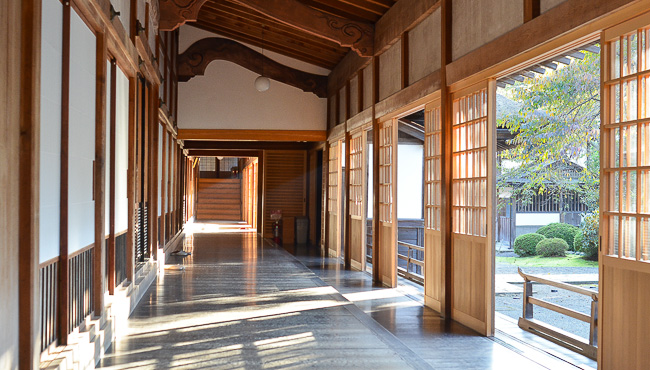
Bookings should be made in advance and are typically made directly with the temple by phone, fax or email. While most temples are only able to communicate in Japanese, there are a few that have English speaking monks. In some popular areas, such as Mount Koya, it is possible to book in English via the local tourist association or online through websites such as Booking.com, Japanese Guest Houses or Japanican.
A night at a temple lodging typically costs between 6,000 and 10,000 per person including dinner and breakfast, but can be more expensive in areas popular among common tourists, such as Mount Koya. Some temples may also offer cheaper plans without meals. Note that many temples will only accept cash for payments.
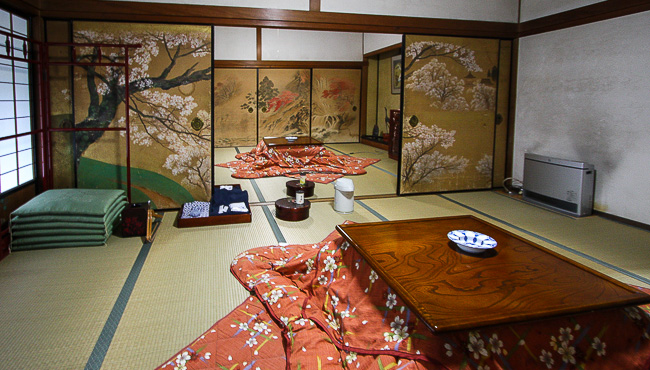
Temple lodgings typically provide their guests with traditional Japanese-style rooms featuring tatami mat floors and sliding doors (fusuma). While they usually offer private guest rooms, the toilets and sinks are often shared among other guests and sometimes with the monks as well. The temples may also offer communal, gender-segregated baths, which are also shared between the guests and possibly with the monks.
Bedding is provided in the form of futon, which are spread out on the tatami floor during the night. Gas heaters and heated tables (kotatsu) are provided for warmth in winter. Some temples also provide amenities that are in line with a typical hotel room, but you may not expect to find in a temple, such as televisions and (rarely) Wi-Fi internet. A small number of temples go further beyond that and offer overnight stays that more resemble those found at a mid-range ryokan, including private washrooms and lavish meals.
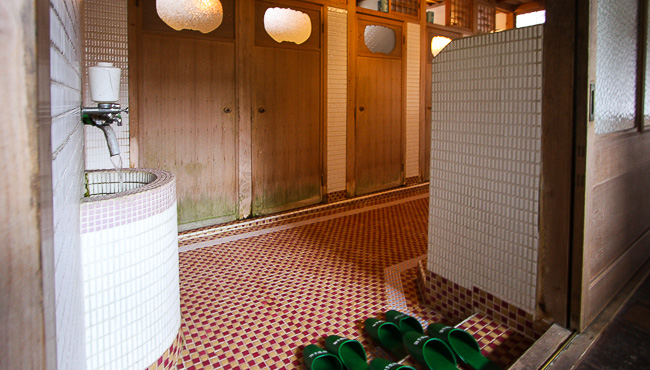
One of the highlights of staying at a temple are the vegetarian meals (shojin ryori), which developed around the Buddhist moral precepts that prohibit taking the lives of other creatures. As such, shojin ryori abstains from using meat or fish and substitutes it with protein-rich plant products such as tofu and konyaku (devils tongue jelly).
The meals at temple lodgings are often served in small dishes and arranged to emphasize seasonal ingredients and themes. This is similar in appearance to kaiseki ryori found at a typical ryokan except that the shojin ryori meals are strictly vegetarian. Although they are often subtly flavored and simply seasoned, the meals are nonetheless savory, filling and delicious. Note that Buddhism does not have any prohibitions on alcohol, so beer, saké and other spirits are usually available.
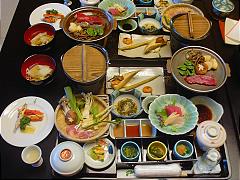
Temples offer their staying guests opportunities that cannot be found at commercial hotels and access to parts of the temple that are not usually available to the ordinary public. Guests are often invited to walk through the temple buildings and around the grounds, where they can appreciate the beautiful wooden temple architecture, view the temple’s cultural treasures and see some of the tranquil inner gardens that are normally inaccessible.
In addition, temples usually invite their guests to participate in morning prayers which typically start early around 6am and last for about 30 to 60 minutes. The ceremonies differ depending on the Buddhist sect that the temple belongs to, and the guests’ level of participation varies. Many will ask you to simply observe quietly, while others allow you to participate more directly, providing song books so that you can join in the chanting, and incense to make small offerings at the altar. Either way, you should be directed about what to do, and some temples may provide English explanations of the ceremonies.
Some temple lodgings offer their guests the chance to experience a few other activities, such as zazen meditation, sutra copying or waterfall meditation. The level of difficulty and guidance varies, but temples with these services typically offer introductory sessions for those without previous experience. Longer, multi-day courses and more advanced workshops may also be available to experienced practitioners.
Unlike ordinary hotels, a shukubo is a sacred place at a temple or a shrine. You do not have to be extremely formal, but you are supposed to refrain from speaking in a loud voice. Let’s stay quiet. Also, the religious service conducted in the morning is neither a show nor entertainment. It is a place of worship. You should refrain from taking pictures as it may hinder the ritual.
For a complete list of shukobo in Kyoto: http://templelodging.com/spot/05kansai/011shukubo_kyoto.html
Shunko-in Temple,
Established in 1590, Shuko-in Temple is located in the Myoshin-ji Temple complex. The temple possesses many important artistic and cultural properties related to Zen Buddhism, and also has a deep connection with Shintoism and Christianity.
One of the most noteworthy cultural assets is the Bell of Nanban-ji Temple (National Important Cultural Property). This bell with Jesuit seals on its surface was made in Japan in 1577 and used at Nanban-ji Church, the first Christian church in Kyoto. Nanban-ji Church was destroyed in the early 17th century but the bell survived and was brought to Shunko-in Temple about 170 years ago.
Besides the bell, Shunko-in Temple is home to many important cultural properties including sliding door paintings by the Kano School artists from the 16th century, a Japanese garden, a hidden Christian lantern and more.
Shunko-in Temple offers Zen meditation classes and temple tours in English. The American-educated vice abbot, Rev. Taka Kawakami, will lead people in the basics of Zen meditation, followed by a tour of the temple.
During the meditation class, participants will not only receive instructions on the basics of meditation, but will also learn how to incorporate Zen philosophy into their daily lives. During the temple tour which follows the meditation, participants will learn more about the history of Shunko-in Temple in a relaxed and warm atmosphere.
In 2013, a new facility was added to the temple – the Guest House “Tetsuryu-Kutsu.” The building is newly built and equipped with modern amenities. Stay in the Shunko-in Temple guest house and get in touch with the world of Japanese Zen.
Open every day; No reservation required; Time: 9:00-10:30, 10:40-12:10 (13:30-15:00: Group of more than 4 people and reservations are required); Price: Meditation & Tour: 2,000 yen, Meditation only: 1,000 yen; Guest house: Each room (2-3 people/room) is equipped with own shower room, toilet, air conditioner; Completely non-smoking facility; Self-catering OK in the shared kitchen; 6,000 yen/person for 1 person, 5,500 yen/person for two people; Check-in: 15:30-18:30 (no late check-in accepted), Check-out: 11:00.
To reserve your room & Zen experiences, please call or email them directly.
Tel: 075-462-5488;
http://shunkoin.com ; http://shunkoinzentemple.blogspot.jp/
Rokuo-in
Rokuo-in is located near Togetsu-kyo Bridge in Arashiyama, which is a famous sightseeing spot in Kyoto. Our temple enjoys a fine reputation for its autumn foliage, and also offers accommodation, exclusively for women.
Open the paper sliding screens of the reception hall to views of our beautiful, Arashiyama-inspired traditional dry landscape garden. We are sure you will enjoy a peaceful, quiet night, staying in our temple. Our curfew is at 7:30 p.m.
The next morning, guests participate in zazen meditation in the reliquary hall from 6:50 a.m. Closing your eyes, listen only to the sound of your own breath, and calm your mind. After a sermon from the head priest, a breakfast of Buddhist vegetarian dishes, or “shojin ryori,” is served.
Japan’s “shojin ryori” is made using only vegetables, beans, and grains. Because the taking of life is forbidden in Buddhism, this cuisine does not include meat or fish dishes. Check-out is at 10 a.m.
Accommodation rate: ¥ 4,500 per night including breakfast
Total number of rooms: 7 rooms (No air conditioning, no TV/ stove available/ communal lavatory) *Shared room during busy season
Bathroom: Available (communal)
Amenity: Shampoo, Body-wash
Check-in: 16:00(Curfew 19:30)
Check-out: 10:00
Training ascetic practice: Participation is expected as a general rule (Zen meditation starting at 6:50)
Reservation: By phone 075-861-1645
Japanese is the only language accommodated for.
Foreign guests should make sure they participate with someone who can speak Japanese.
Ryuan-an
http://www.kyo-yado.com/yugyo-an/top.html
http://www.age.ne.jp/x/chouraku/syukubo/syukubo.html
Chorakuji Temple Shukubo
http://templelodging.com/spot/05kansai/kyoto017.html
Tel: 075-532-2770/Fax: 075-532-2771
Ninnaji Temple Omurokaikan
The Ninnaji Temple Omurokaikan is a perfect base for touring around the Kinkakuji Temple, the Ryoanji Temple, and the Arashiyama area, which makes it a very popular guesthouse among tourists. It is located within the temple grounds of “Kyu-Omurogosho Ninnaji“, which has been designated a World Heritage Site, and staying overnight comes with the benefit of being able to visit the Omuro Garden for free. In addition, overnight guests are allowed to participate in the morning “otsutome” service in the Golden Pavilion, a private cultural asset, in which Buddhist monks quietly recite sutras before a candle lit statue of Buddha. There is no better way to start a fresh new day. The guesthouse has been recently renewed in 2010 and 2011, so its interior is very neat. We recommend staying here especially to those who have never stayed at a temple guesthouse before. The prices are 9,800 JPY (tax included) for a 1 night stay with 2 meals included, 6,200 JPY (tax included) for a 1 night stay with breakfast included, and 5,400 JPY (tax included) for a 1 night stay with no meals included.
Check-in: 16:00; Check-out: 9:00; Curfew: 23:00; Morning service from 6:30 in winter, from 6:00 in summer; Attending the morning service is not compulsory; No credit cards accepted.
http://www.ninnaji.or.jp/syukubou/index.html
Tel: 075-464-3664/Fax: 075-464-3665
Daishin-in Temple
A number of small sub-temples stand here and there in the huge temple precinct of Myoshin-ji Temple. However, there are only two sub-temples that accept visitors to stay and experience the world of Buddhism. One is Torin-in Temple, well known for their Buddhist cooking class, and the other is Daishin-in Temple. Many temples in Kyoto offer accommodation but Daishin-in is one of the simplest, most reasonably priced, and probably the best place to experience life in a temple. Some temples have separate building for accommodation, often known as “Kaikan” but at Daishin-in Temple, visitors actually stay in the temple itself. Rooms are very simple and just divided by sliding doors. Some rooms face the garden so you can take as much time as you want to immerse yourself in contemplation in complete quietness. Breakfast is a perfect Buddhist vegetarian style (shojin ryori) repast that will help your body and mind awaken. The simple dishes will encourage you to notice the subtle taste of the ingredients. Foreigners are warmly accommodated. Experience the taste and life of a traditional Buddhist temple.
5,000 yen/person/night (with breakfast; for 1 person; tax included); Check-in: 15:00 (check-in by 18:00 if dinner is requested); Check-out: 10:00; Curfew: 21:00 (lights off: 22:00); Guests are welcome to join the morning service; Shojin Buddhist vegetarian cuisine for dinner is 4,000 yen (w/o tax), reservation required; Contact the temple by phone and check room availability, then, make your reservation by respond-postcard; No credit cards accepted.
Jorenge-in Temple
Jorenge-in is a temple located on a mountain out of Kyoto, and which has a guesthouse for visitors to stay in Ohara. Guests can not only participate in the morning “otsutome” service, but here they can also experience “zazen” and “shakyo” meditation. The meals are vegetarian and use fresh ingredients harvested from the mountain, and they are highly popular among staying guests. In fact, many of the guests actually come here for the food. The environment that surrounds the guesthouse is good, as well, and all you can hear is the chirping of birds and the streaming water of the river. This is just the perfect place to get away from the bustle of the city and relax. Prices start at 16,000 JPY (tax included) for a 1 night stay for 2 people sharing one room. Dinner and breakfast are included.
Jorenge-in
Ohara Raikoincho-407
Sakyo-ku, Kyoto
Kyoto Prefecture 601-1242
Tel: 075 744 2408
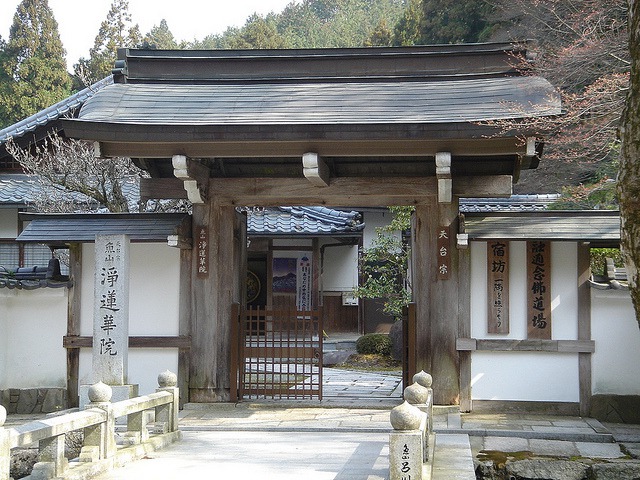
Chion-in Wajun Kaikan
While Chion-in Wajun Kaikan is right next to the Gion district, where you can enjoy a Kyoto-like atmosphere and shopping, it offers a very authentic temple guesthouse experience. You may wonder how it is possible that this sophisticated guest house actually belongs to a temple, but here you can really enjoy the lifestyle of a Buddhist temple. The combination of modern facilities and an authentic temple guesthouse experience make this a very popular guesthouse among Japanese fans of this way of traveling. Prices per person in a shared triple room start at 11,700 JPY (tax included) for a 1 night stay with 2 meals included, 7,600 JPY (tax included) for a 1 night stay with breakfast included, and 6,100 JPY(including tax)for a 1 night stay with no meals included.


